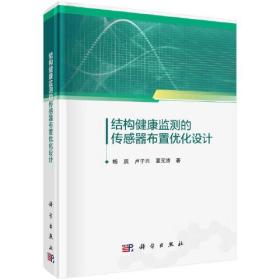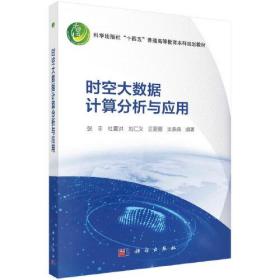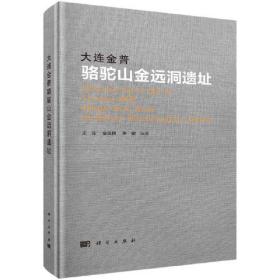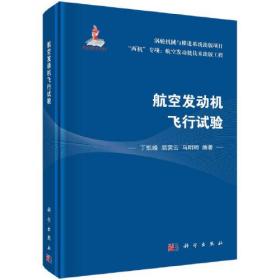
对比语言学导论(英文版)
¥ 43.18 九品
仅1件
北京东城
认证卖家担保交易快速发货售后保障
作者柯平 编
出版社北京大学出版社
出版时间2016-01
版次1
装帧平装
货号A3
上书时间2024-11-17
- 最新上架
商品详情
- 品相描述:九品
图书标准信息
- 作者 柯平 编
- 出版社 北京大学出版社
- 出版时间 2016-01
- 版次 1
- ISBN 9787301263334
- 定价 39.00元
- 装帧 平装
- 开本 16开
- 纸张 胶版纸
- 页数 264页
- 字数 280千字
- 正文语种 简体中文,英语
- 丛书 21世纪英语专业系列教材
- 【内容简介】
-
本书主要特点与创新之处包括:(1)探讨了英汉语言结构与功能差异背后的深层原因(如造成英汉语亲属称谓繁简之别以及英汉语语篇结构差异的社会历史与文化心理因素等);(2)从理论与实践两方面阐明了英汉语言研究中的许多重要问题(如英语主语突出与汉语话题突出这两种迥然不同的信息结构、诗歌翻译归化与外化的语言学依据等);(3)国内已有的相关研究集中于语音、音位、词汇和语法层次上的对比分析,对翻译、外语写作和外语交际特别重要的篇章和语用对比方面的研究相当缺少,本书针对此情况做了比较多的填空补缺工作(如对英汉语篇章结构上的差异与中国学生英语写作与英汉互译问题之间的关系的研究、对不同语言会话结构方面的语用特点与跨文化交往中沟通与对谈的技巧之间的关系的讨论等);(4)强调结构与生成的概念,自始至终贯穿着现代科学的分析精神与方法;(5)在句法和语义对比基础的讨论中,作者引入了符号学概念,在国内同类型著作中属于首创。
- 【作者简介】
- 南京大学教授,博士生导师,江苏省译协理事,中国翻译协会专家会员,中国英汉语比较研究会理事。1987-1990年间任教于北京大学英语系,曾获北京大学"优秀青年学者奖"二等奖。
- 【目录】
-
LIST OF FIGURES AND TABLES9
PREFACE11
CHAPTER 1 INTRODUCTION1
1.1What is Contrastive Linguistics?1
1.1.1The Name and Nature of Contrastive Linguistics2
1.1.1.1Linguistics2
1.1.1.2Contrastive Linguistics (Contrastive Analysis)4
1.1.2Micro-Contrastive Linguistics and Macro-Contrastive Linguistics10
1.2Why Contrastive Linguistics?11
1.2.1The Theoretical Need for Contrastive Linguistics12
1.2.2The Practical Need for Contrastive Linguistics13
1.3The History and Development of Contrastive Linguistics18
Questions for Discussion and Research26
CHAPTER 2 THE PRINCIPLES AND METHODS OF CONTRASTIVE ANALYSIS28
2.1Basic Assumptions and Hypotheses Underlying Contrastive Analysis (CA)28
2.1.1The Psychological Basis of Contrastive Analysis: Transfer29
2.1.2The Strong and Weak Versions of Contrastive Analysis Hypothesis30
2.1.3The Predictive Power of Contrastive Analysis31
2.2Theoretical Contrastive Analysis and Applied Contrastive Analysis32
2.3Criteria for Comparison37
2.3.1The Surface Structure (SS)38
2.3.2The Deep Structure (DS)40
2.3.3Translation Equivalence44
2.4Procedures of Contrastive Analysis49
Questions for Discussion and Research50
CHAPTER 3 PHONETIC AND PHONOLOGICAL CONTRASTIVE ANALYSIS52
3.1Phonetics and Phonology52
3.2Contrastive Phonetics54
3.2.1Articulatory Phonetics54
3.2.1.1Vocal organs (articulators) and the dynamics of voice production54
3.2.1.2The modulation of speech sounds58
3.2.2Acoustic Phonetics60
3.2.2.1Frequency60
3.2.2.2Amplitude of vibration61
3.2.2.3Timbre61
3.2.3Auditory Phonetics62
3.3Contrastive Phonology65
3.3.1Phonological Contrastive Analysis65
3.3.1.1The functional statuses of comparable speech sounds in different languages65
3.3.1.2Pronunciation problems caused by phonemic asymmetries and by allophonic differences66
3.3.1.3The functional loads of comparable phonological contrasts in different languages67
3.3.2Two Phonological Models68
3.3.2.1The taxonomic or structural phonology68
3.3.2.2Generative phonology69
3.4Suprasegmental Contrastive Analysis71
3.4.1The Contrastive Analysis of Pitch72
3.4.1.1Tone72
3.4.1.2Intonation73
3.4.2The Contrastive Analysis of Juncture75
Questions for Discussion and Research76
CHAPTER 4 LEXICAL CONTRASTIVE ANALYSIS78
4.1Contrastive Lexical Morphology79
4.1.1Lexical/Derivational Morphology and Inflectional Morphology79
4.1.2Morpheme80
4.1.2.1Free morpheme80
4.1.2.2Bound morpheme80
4.1.2.2.1 Affix80
4.1.2.2.2 Combining form81
4.1.2.3Stem (base morpheme) and root81
4.1.3A Comparison of the Makeup of English and Chinese Word Stock82
4.2Contrastive Lexical Semantics84
4.2.1The Motivation (Internal Form) of Words85
4.2.1.1Phonetic motivation86
4.2.1.2Graphemic motivation86
4.2.1.3Morphological motivation87
4.2.1.4Semantic motivation87
4.2.1.5A contrastive analysis of the morphological motivation of English, German, and Chinese words87
4.2.2Sense Relationships91
4.2.2.1Syntagmatic semantic relationship: Collocation92
4.2.2.2Paradigmatic semantic relationships94
4.2.2.2.1 Synonymy94
4.2.2.2.2 Antonymy95
4.2.2.2.3 Hyponymy96
4.2.2.2.4 Incompatibility98
4.2.2.3Lexical fields and lexical gaps98
4.2.3Semantic Features103
4.3Three Active Areas107
4.3.1Anthropology108
4.3.2Translation114
4.3.3Bilingual Lexicography118
Questions for Discussion and Research119
CHAPTER 5 GRAMMATICAL CONTRASTIVE ANALYSIS122
5.1The Concept of Grammar122
5.2The Contrastive Analysis of Inflectional Morphology124
5.2.1Grammatical Categories126
5.2.1.1Aspect126
5.2.1.2Case128
5.2.1.3Gender129
5.2.1.4Mood129
5.2.1.5Number129
5.2.1.6Person130
5.2.1.7Tense130
5.2.1.8Voice130
5.2.2A Contrastive Study of the Chinese and English Case Systems131
5.3Syntactic Contrastive Analysis135
5.3.1The Structural Approach (Surface-structure Contrasts)135
5.3.2The Weaknesses of the Structural Approach139
5.3.3The Generative Approaches140
5.3.3.1The Transformational Grammarian approach (For deep-structure contrasts)141
5.3.3.2The Case Grammarian approach (For deeper-structure contrasts)147
Questions for Discussion and Research154
CHAPTER 6 TEXTUAL CONTRASTIVE ANALYSIS156
6.1Text and Discourse158
6.2The Defining Characteristics of the Text159
6.3The Contrastive Analysis of Textual Cohesion162
6.3.1Semantic Cohesion164
6.3.1.1Reference164
6.3.1.2Substitution167
6.3.1.3Ellipsis168
6.3.1.4Conjunction170
6.3.1.5Lexical relationships ("lexical cohesion")174
6.3.2Structural Cohesion175
6.3.2.1Parallelism175
6.3.2.2Comparison180
6.3.2.3Information structure180
6.3.2.3.1 Theme and Rheme181
6.3.2.3.2 Functional Sentence Perspective (FSP)182
6.3.2.3.3 Topic and Comment183
6.3.3Different Languages Preferring Different Cohesive Devices192
6.4The Contrastive Analysis of Textual Coherence192
Questions for Discussion and Research200
CHAPTER 7 PRAGMATIC CONTRASTIVE ANALYSIS203
7.1Speech Act Theory203
7.1.1Speech Acts204
7.1.1.1Performatives and constatives204
7.1.1.2Three kinds of speech acts204
7.1.1.3Five basic types of illocutionary acts205
7.1.2Felicity Conditions206
7.2Conversational Interaction207
7.2.1The Structural Components of Conversation208
7.2.1.1Openings208
7.2.1.2The maintaining of a conversation210
7.2.1.3Closings215
7.2.2Principles of Conversational Organization217
7.2.2.1The Cooperative Principle (Be Clear)217
7.2.2.1.1 Conversational maxims217
7.2.2.1.2 Conversational implicature218
7.2.2.2The Rules of Politeness (Be Polite)221
7.2.2.2.1 Rule 1: Don't impose on your hearer221
7.2.2.2.2 Rule 2: Give the hearer options223
7.2.2.2.3 Rule 3: Make the hearer feel good: Be friendly223
Questions for Discussion and Research225
REFERENCES227
INDEX235
点击展开
点击收起
— 没有更多了 —












以下为对购买帮助不大的评价